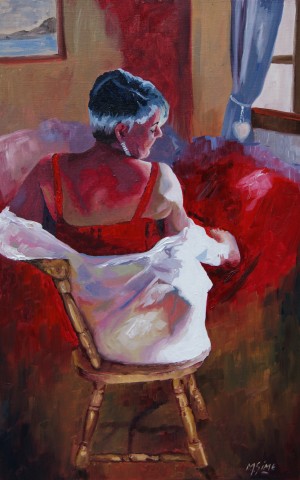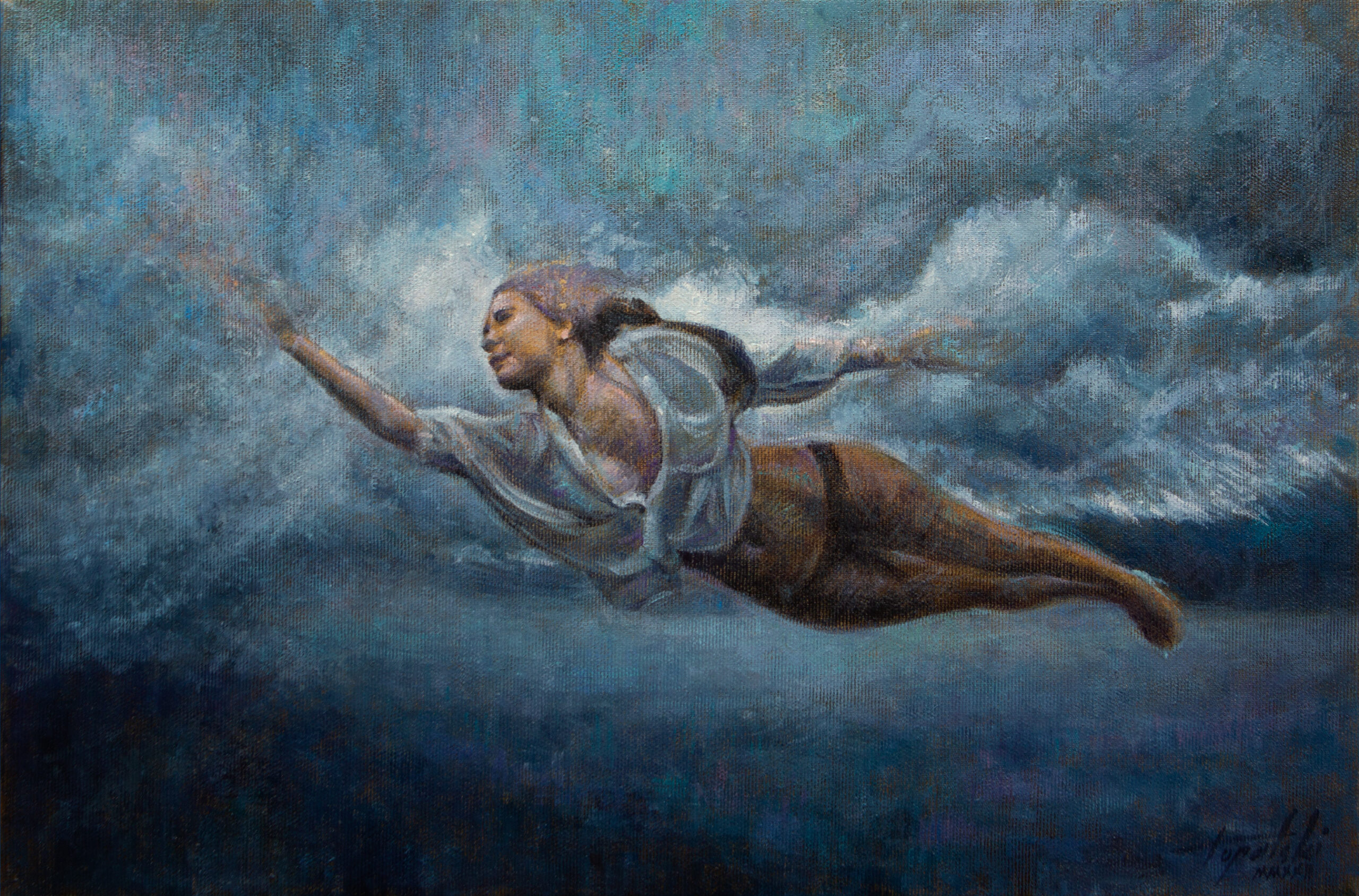Figurative Oil Painting: From Concept to Canvas - A Step-by-Step Approach
Figurative Oil Painting: From Concept to Canvas - A Step-by-Step Approach
Blog Article
The Evolution of Metaphorical Oil Paint: Comprehending Its Historical Significance and Modern Interpretations
The development of metaphorical oil paint serves as a compelling lens via which to examine the interplay in between artistic expression and historical context. Contemporary artists, attracting from this rich heritage, are currently reinterpreting the human figure in ways that challenge conventional stories.
Beginnings of Figurative Oil Painting
The beginnings of figurative oil paint can be traced back to the very early Renaissance in Europe, particularly in the 15th century. This duration noted a substantial separation from the inflexible kinds and level depictions characteristic of medieval art. Artists began to check out naturalism, emphasizing the human number and its emotional expression. The growth of oil paint permitted for better deepness of shade and detail, boosting the realism and vibrancy of their job.

In this transformative era, numbers were typically shown within contextually abundant settings, showcasing not only their physical attributes but additionally their mental states. Leaders such as Jan van Eyck and Titian utilized the tool's versatility, employing layering techniques to achieve luminosity and appearance. This advancement facilitated the portrayal of elaborate fabrics and the subtleties of skin tones, contributing to the development of portrait and narrative scenes.
Moreover, the Renaissance emphasis on humanism cultivated a recognition for individualism, which subsequently affected artists to produce even more relatable and vibrant figures - figurative oil painting. Consequently, figurative oil paint emerged as a powerful vehicle for storytelling and psychological involvement, preparing for future imaginative movements and styles
Secret Historical Motions
Substantial historic activities have formed the development of metaphorical oil paint, each contributing distinct ideologies and techniques that broadened the medium's opportunities. The Renaissance noted a turning point, highlighting realism and the human form, with artists like Leonardo da Vinci and Michelangelo pushing the limits of physiological accuracy and perspective. Following this, the Baroque age brought remarkable contrasts of light and shadow, exemplified by Caravaggio, that infused spiritual themes with intense emotionality.
The 19th century introduced Romanticism and Realistic look, where artists such as Delacroix and Courbet challenged classical ideals, focusing on individual expression and daily life. The advent of Impressionism even more transformed the tool by highlighting the impacts of light and color, resulting in a departure from conventional representation.
In the early 20th century, activities like Expressionism and Cubism redefined metaphorical paint with abstraction and the exploration of psychological deepness. Each of these movements not only showed the societal modifications of their times yet additionally prepared for contemporary interpretations. The interplay between these historical movements has developed a rich tapestry of styles and philosophies, influencing contemporary musicians in their pursuit of capturing the human experience on canvas.
Strategies and Products Evolution

Throughout the Baroque duration, techniques such as chiaroscuro and sfumato arised, boosting the psychological vibration of metaphorical compositions. Musicians began to explore lusters and impasto, adjusting texture and luminosity. By the 19th century, advancements like making use of pre-mixed paints in tubes revolutionized availability, permitting artists to paint en plein air and record the fleeting effects of light.
The 20th century experienced the intro of artificial pigments and mediums, which expanded the palette and altered the consistency of oil paints. The expedition of new application strategies, such as palette blades and brushes of varying rigidity, further diversified imaginative expression. click now Collectively, these advancements mirror the advancing partnership in between materials, methods, and the creative vision intrinsic in metaphorical oil painting.

Contemporary Analyses
Contemporary interpretations of figurative oil paint mirror a vibrant dialogue in between tradition and advancement, where artists challenge established standards and discover diverse styles. This development materializes in different methods, as contemporary artists blend classical strategies with modern-day ideas, commonly attending to social, political, and personal narratives.
Lots of professionals attract motivation from historical works, yet they instill their items with contemporary perspectives, utilizing the human kind as a lorry for discourse on culture, identity, and sex. Artists increasingly trying out abstraction, distortion, and multimedias, which allows for a more comprehensive interpretation of the number and its context.
In addition, the usage of vivid color combinations and unusual compositions usually serves to disrupt traditional seeing experiences, provoking critical interaction from target markets. This shift in emphasis expands past appearances; it reflects a growing awareness of the complexities of human experience in an interconnected world.
As metaphorical oil painting proceeds to progress, it remains an essential medium for discovering the nuances of modern life, embodying both a regard for heritage and a dedication to modern idea. The result is a rich tapestry of expression that reverberates with the intricacies of the contemporary human condition.
Effect On Modern Art
The effect of metaphorical oil paint on modern art is extensive, as it has consistently inspired a myriad of artistic motions and techniques throughout the 21st and 20th centuries. From Expressionism to Surrealism and beyond, the exploration of the human figure has stayed a main motif, allowing artists to convey intricate feelings and stories. This focus on metaphorical depiction has resulted in a re-examination of conventional methods, causing cutting-edge strategies that mix realistic look with abstraction.
Moreover, contemporary artists have actually embraced metaphorical oil paint as a way to address social and political issues, utilizing the medium to challenge perceptions of identification, society, and gender. The resurgence of interest in metaphorical job in current years shows a longing for connection in an increasingly digital world, where human experience and feeling are extremely important.
Furthermore, the dialogue between metaphorical oil paint and contemporary art is apparent in the works of musicians such as Kehinde Wiley and Jenny Saville, that attract on historic recommendations while instilling their pieces with modern importance. Eventually, figurative oil paint proceeds to shape and redefine modern-day imaginative expression, highlighting its enduring value in the art globe.
Final Thought
The evolution of metaphorical oil paint highlights its historic significance and versatility throughout various creative movements. Inevitably, figurative oil painting stays a vital medium for checking out the human experience, reverberating profoundly in today's digital landscape.
The development of metaphorical oil painting serves as a compelling lens via which to examine the interplay in between artistic expression and historical context.Considerable historic activities have actually shaped the evolution of figurative oil imp source paint, each adding one-of-a-kind philosophies and methods that broadened the tool's opportunities.As historic motions formed the trajectory of metaphorical oil paint, the materials and methods utilized by artists have actually additionally undertaken substantial transformations. figurative oil painting.The effect of figurative oil painting on modern art is profound, as it has consistently motivated a myriad of creative movements and methods throughout the 21st and 20th centuries.The development of figurative oil paint emphasizes its historical relevance and adaptability throughout numerous artistic movements
Report this page